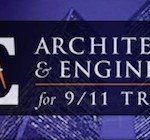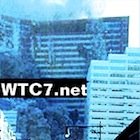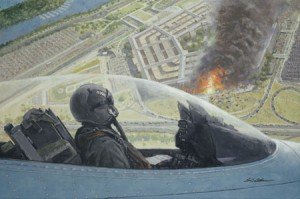The NIST Report on the World Trade Center Collapse one year later: Still Dead On Arrival
By Mark H. Gaffney
A note to the reader: In December 2006 Mark H. Gaffney posted a scathing critique of the US government’s official report about the WTC collapse on 9/11. One year later, the case is stronger than ever. * *
 01/04/08 “ICH ” — – –In August 2002 the US Congress authorized the National Institute for Safety and Transportation (NIST) to investigate the collapse of the World Trade Center on 9/11. The official instruction was not limited to conducting a building performance study, as some have claimed.[1] The primary stated objective of the investigation was to determine the cause of the collapse–––no less.[2]
01/04/08 “ICH ” — – –In August 2002 the US Congress authorized the National Institute for Safety and Transportation (NIST) to investigate the collapse of the World Trade Center on 9/11. The official instruction was not limited to conducting a building performance study, as some have claimed.[1] The primary stated objective of the investigation was to determine the cause of the collapse–––no less.[2]
When NIST released its final report in September 2005, critics charged that the agency had ignored evidence of explosions in the towers. The agency responded by asserting its scientific laurels. NIST insisted that its “200 technical experts” had conducted “an extremely thorough investigation.” NIST boasted that its staff “reviewed tens of thousands of documents, interviewed more than 1,000 people, reviewed 7,000 segments of video footage and 7,000 photographs, analyzed 236 pieces of steel fromthe wreckage, performed laboratory tests and sophisticated computer simulations,” yet, found “no corroborating evidence for a controlled demolition.” NIST also claimed that it had considered “a number of hypotheses for the collapse of the towers.”[3]
No doubt, many Americans were persuaded by this snow-job. Sad to say, few of our countrymen (or women) bother to read official reports, especially when they run to 10,000 pages. The persistent individuals who do, however, know that there are sound reasons to question all of the above; because a close reading of the NIST report shows that the agency assumed from the beginning that the Boeing 767 impacts and subsequent fires were responsible for the collapse of the twin towers. The report gives no consideration whatsoever to alternative hypotheses, including the possible use of explosives, the leading candidate. Far from exploring other scenarios, NIST simply took it for granted that the impacts set in motion a chain of events leading to a catastrophic structural failure. Working backwards, NIST scientists searched for evidence that supported their predetermined conclusion. Everything else was ignored or excluded. If it is not already evident to the reader, this is no way to conduct a scientific investigation. NIST then had the audacity to imply that it arrived at its favored collapse model through an exhaustive process of elimination. Most readers who merely browsed NIST’s 2005 Executive Summary probably were not aware that NIST’s stated conclusion was really an assumption. Consider this passage, for example:
“The tragic consequences of the September 11, 2001 attacks were directly attributable to the fact that terrorists flew large jet-fuel laden commercial airliners into the WTC towers. Buildings for use by the general population are not designed to withstand attacks of such severity; building codes do not require building designs to consider aircraft impact.”[4]
The above comment about building codes is deceptive–––NIST readily concedes in its report that the towers survived the initial impacts. In fact, John Skilling, the structural engineer who designed the WTC, always claimed that they would. The towers survived, despite serious damage, because they were hugely overbuilt, redundant by design. Although the WTC’s soaring lines gave the impression of a relatively light frame, in fact, the twin towers were extremely rugged buildings, engineered to withstand hurricane-force winds and even a direct hit by a Boeing 707, the largest commercial jetliner of the day. Some have argued that the newer Boeing 767s caused much more damage because of their larger size, but in fact, the two Boeings are comparable. Although slightly smaller, the 707 has a greater cruise speed of 600 mph (as compared with 530 mph for a Boeing 767). Assuming both were to crash at this speed, the 707 would actually have greater kinetic energy.[5]
After the Boeing 767 impacts on 9/11 the severed steel columns simply transferred the weight of the building to other undamaged columns. The NIST report even states that the towers would probably have stood indefinitely, if the impacts had not dislodged the fireproofing material that protected the steel from fire-generated heat.[6] Construction-grade steel begins to lose strength at 425°C (~800°F) and is only about half as strong at 650°C (1,202°F). NIST argues in its report that the crashed jetliners damaged or dislodged 100% of the protective insulation within the impact zone, while also spilling many thousands of gallons of jet fuel over multiple floors. The resulting 800-1,000°C (1,440-1,800°F ) blaze–––the report claims–––seriously weakened the now-exposed steel, leading to a global structural failure. In order to understand the official story, however, and why it fails to explain the WTC collapse, it is necessary to know more about the World Trade Center and how it was built.
A State-of-the-Art Design
Upon its completion in 1970 the north tower of the Trade Center soared 1,368 feet tall–––100 feet higher than the Empire State Building. In addition to being the world’s tallest skyscraper, it was a state-of-the-art achievement of high-rise construction.[7] Designed by architect Minoru Yamasaki, the WTC was one of the first skyscrapers to feature large expanses of unobstructed floor space within a steel-frame building. Although commonplace today, this was a novel idea in the 1960s, as it required doing away with the forest of columns so typical of the skyscrapers of former years. Chief engineer John Skilling achieved the objective of open space with a double support system: the first so-called tubular design, consisting of a dense array of 240 columns around the outer wall or perimeter, and a network of 47 huge columns at the core. The core columns supported about 53% of the weight of each building, and were massive, up to 52 inches wide.[8] The steel in these monster columns was seven inches thick at the base.[9]
The core columns were of two types: box columns at the foot of the buildings, gradually transitioning to rolled wide-flange beams (“I” beams) higher up. The core of each tower, including the elevators and stairwells. was surrounded by expansive office space. The perimeter wall supported 47% of the weight and also resisted the force of the wind. These exterior columns were reinforced with broad steel plates known as “spandrels,” which girdled the building, like ribs, at every floor. Although the core columns gradually increased in size from top to bottom, for aesthetic reasons the external dimensions of the perimeter columns had to be the same all the way down, hence, required the use of heat-treated steel. For this reason Skilling’s new tubular concept only became possible with the introduction of high-strength steels in the 1960s. Prefabrication and a modular design were other innovations that kept costs down and allowed for speedy construction.
Both inner and outer sets of columns were joined together by an innovative system of lightweight steel trusses. Each floor consisted of a truss assembly, over which was laid a corrugated steel deck–––the bed for a poured four-inch slab of concrete. Although lightweight, the floor design was so sound that it easily supported the weight of libraries, file rooms, and heavy safes without the need for additional strengthening.[10] The lightweight truss assemblies were vulnerable to fire damage, however, because they consisted of rather thin steel members. For this reason, at the time of construction the trusses were spray-coated with protective insulation, 0.75 inch thick, and this was later upgraded to an average thickness of more than two inches.[11] (The technical term for this insulation is Spray-applied Fire Resistant Material = SFRM) The core columns had a fire-barrier of gypsum wallboard.
NIST argues that the Boeing impacts jarred loose this protective insulation from the steel trusses and columns. The subsequent fires then weakened the exposed trusses, causing them to sag. This, in turn, pulled the perimeter columns inward. The fires also weakened both sets of columns and at a critical point the perimeter wall buckled. NIST makes the claim that its investigation showed conclusively that the initiation occurred in the perimeter wall, triggering a global collapse.[12] Did the agency prove its case? In a moment I will explore this question. Before I do, however, it is important to understand what NIST did not investigate.
What NIST failed to investigate
Despite its broad charge to investigate the WTC collapse, NIST limited the scope of its investigation to the sequence of events from the first plane impacts to the onset of collapse. This means, of course, that NIST failed to study the collapse itself. This narrow focus–––some would call it sleight-of-hand–––allowed NIST to side-step a number of important issues. No doubt, this was the intent, since investigating them would surely have led NIST scientists to very different conclusions. The first and foremost of these issues was the near free-fall speed of the collapse. Videos filmed on 9/11 confirm that the towers plummeted as if there was no resistance whatsoever. But how can this be, given the enormous inertial mass of the building itself, which should have resisted and slowed the fall considerably? Even if we assume that the columns in the impact zone failed, the rest of the columns in the towers were untouched by the plane impacts and fires, therefor, suffered no loss of strength. These stone-cold columns should have resisted the fall. Although the exact time of the collapse of WTC 1 and 2 cannot be determined with precision because of the growing dust cloud, each collapse took approximately 10-12 seconds, only 1-2 seconds slower than the time for a billiard ball to free-fall from the WTC roof to the plaza. But how can this be? By what special dispensation did the collapsing WTC violate the laws of physics? The reader will search the NIST report in vain for any discussion of this important anomaly. Why not? Obviously. because agency officials made a political decision not to go there.
No less puzzling was the fact that the collapses were total and nearly symmetrical. This means, of course, that when the collapses began all of the columns on that floor failed at precisely the same moment. But, again, how could this happen? Even if we assume that the plane impacts severed or damaged a number of columns in the impact zone, and even if we also assume that the fires weakened a number of other nearby columns, the majority of columns in the buildings and even on the affected floors were still at full strength at the moment of collapse. The collapses were also total. The rubble from the buildings fell through the plaza level and piled up in the basements. Photos by Joel Meyerowitz and others show that the piles of wreckage were about six stories high, as evidenced by surviving portions of the perimeter wall. The wreckage reached the level of the column tree–––a convenient reference point–––where the larger exterior columns around the base divided into three smaller columns above. The totality of the collapse is hard to explain because, as noted, the largest and strongest columns were in the lower part of the buildings. The towers encountered increasing mass, i.e., resistance, as they fell. For this reason, at least one engineer has argued that the WTC collapse should at some point have self-arrested.[13] Other experts hotly dispute this, however, and the matter remains controversial.[14] Engineers clearly are fascinated by this question. Although a more detailed discussion is beyond the scope of this article, it is evident that media coverage has often served to confuse the issue rather than clarify. In a recent 9/11 documentary on the History Channel, for example, a debunker glibly described the events at Ground Zero as a “classic progressive collapse,” as if this were a well-known or frequent phenomenon.[15] But this is plainly false. As noted–––and I must emphasize it again–––no steel-frame skyscraper had ever collapsed before 9/11, nor has any since.
By the way, there is an excellent reason why they do not fall down. Structural steel happens to be an extremely tough and forgiving substance–––the reason it is the pre-eminent building material used in high-rise construction. As the 9/11 Commission Report concedes, none of the NYFD chiefs anticipated a catastrophic structural failure on 9/11, despite the fires and impacts.[16] Had they believed a general collapse was possible, the chiefs would not have established their emergency command posts in the lobbies of the stricken towers. Nor would they have ordered hundreds of New York City firemen to begin the long climb up the stairwells to aid the victims and assist with the evacuation. As we know, 343 of them perished. According to the official report, at least one of the fire chiefs did express concern about the danger of a partial collapse on the upper floors.[17] No doubt, this individual was as shocked as everyone else by the totality and near-perfect symmetry of the collapses that ensued–––both standard features of controlled demolitions and virtually unknown in random fire events. After I posted a critique of the NIST report in December 2006, I received a letter from a retired fireman who informed me that over the course of his twenty-odd years of service he had fought many types of fires, involving residential, commercial and industrial structures, including high-rise buildings. He explained that on a number of occasions, when his crew lost the battle to save a structure “some of the times the building would collapse…. in a random, haphazard, piecemeal fashion. Not once,” he wrote, “did I personally witness one of those structures collapsing in the rather controlled…fashion as the WTC towers and Building 7.”[18]
Another anomaly was the pulverization of material. Through history, concrete buildings have been known to collapse during powerful earthquakes, and when this occurs they typically fold up like an accordion, leaving a succession of concrete slabs, one piled on top of another, each plainly discernible in the rubble. But nothing like this occurred on 9/11. Photos of the mountain of wreckage at Ground Zero show very few, if any, large chunks of concrete. The rubble pile consisted almost exclusively of twisted steel. The conspicuous absence of concrete is remarkable, since concrete was the main constituent of the 500,000 ton towers. As noted, each floor of the 110-story building, roughly an acre in size, consisted of a slab of poured concrete, most of which was pulverized during the collapse into small pieces and fine dust. Some have attributed this to the force of gravity, but videos of the collapse dispute this. The buildings were not pulverized as they hit the ground, they disintegrated in midair. As the south tower started to collapse, for example, the entire upper section tipped as a unit, then inexplicably turned to dust before our eyes. Much of this dust settled a foot deep on the sixteen-acre WTC site. The rest was deposited across lower Manhattan. Nor was the pulverization limited to concrete. Other construction materials also disappeared without a trace, including glass, office furniture and tens of thousands of computers, not to mention the many victims. It’s a fact that less than 300 corpses were recovered. Most of the victims were identified solely from body parts. Strangely, when workmen began to dismantle the badly damaged Deutsch Bank on December 8, 2006, they found more than 700 slivers of bone on the roof and within the structure.[19] This bizarre report has never been explained.
And there were other anomalies. The video record plainly shows that during the WTC collapse, perimeter columns weighing twenty tons or more were hurled as far as 500-600 feet from the towers. One remarkable photo of Ground Zero taken from above shows that entire sections of WTC-1’s western perimeter wall were thrown 500+ feet toward the Winter Garden.[20] Could a gravitational collapse do this? Doubtful. The NIST report not only fails to address any of these issues, it doesn’t even try. The report makes reference to the “global collapse” of the towers, but we never learn precisely what this means because NIST never informs us. By limiting the scope of its inquiry NIST rendered the truth unobtainable–––an effective way to neuter an investigation.
With all of this in mind, let us now explore what NIST did investigate.
The Special Projects
The NIST investigation was comprised of eight separate projects, which all together produced 43 volumes of supporting documentation. The projects included metallurgical studies, an impact analysis, an attempt to reconstruct the fires, and a computer model of the probable sequence of events leading to the collapse of each tower. Some of the agency’s research was of excellent quality–––some was not. But the main problem is that none of it lends credence to NIST’s official conclusions.
Probably the most serious obstacle NIST investigators faced was a lack of information about the dynamic conditions that existed in the core of the towers on 9/11.[21] To be sure, thousands of photographs and hundreds of hours of videotape made it possible to study in detail the damage to the WTC exterior, and to gain a reasonable understanding about conditions in the outer offices. Fires were often visible through the windows, despite dense smoke, and structural damage in the impact zone, such as collapsed floors, was also discernible. However, as the NIST report states, “Fires deeper than a few meters inside the building could not be seen because of the smoke obscuration [sic] and the steep viewing angle of nearly all the photographs.”[22] This is an important admission, and one that NIST repeats a number of times. For example, in one of the supplementary documents NIST scientists qualify their analysis of the effects of the fire upon the steel with the following caveat:
“As conditions within the building core could not be determined from the photographic database, it was unknown what environment the recovered core columns may have experienced.”[23]
As we will see, this candid statement haunts the entire report. In fact, the only physical evidence NIST had about the actual conditions at the core was the data it was able to glean from 236 steel columns, panels, trusses, and other smaller samples recovered from the WTC ruin.[24] Metallurgical testing of these steel samples was probably the most important work NIST carried out, because this was the foundation for the rest of the investigation.
The Metallurgical Studies
Thanks to the original labeling system used during the construction of the WTC, NIST was able to identify many of the samples it had gathered, and to determine with precision their locations in the WTC. As it happened, a number of the columns were from the impact and fire zones.[25] Although the collection represented only 0.25 – 0.5 % of the 180,000 total tons of structural steel used in the two towers, NIST scientists believed their sampling was adequate to determine the quality of the steel and to evaluate its performance on 911.[26]
The metallurgical findings decisively refuted the pancake theory of collapse widely reported in the media after 9/11. The pancake enthusiasts had argued that the weak link in the WTC was the point of attachment where the trusses connected with the inner and outer columns. These junctions, referred to as angle-clips, were made of relatively lightweight steel and were secured by steel bolts. During a 2002 NOVA television special MIT engineer Thomas Eagar explained the pancake model and why in his opinion the trusses had failed:
“…the steel had plenty of strength, until it reached temperatures of 1,100º to 1,300ºF. In this range, the steel started losing a lot of strength, and the bending became greater. Eventually the steel lost 80 percent of its strength, because of this fire that consumed the whole floor….then you got this domino effect. Once you started to get angle-clips to fail in one area, it put extra load on other angle-clips, and then it unzipped around the building on that floor in a matter of seconds. If you look at the whole structure, they are the smallest piece of steel. As everything begins to distort, the smallest piece is going to become the weak link in the chain. They were plenty strong for holding up one truss, but when you lost several trusses, the trusses adjacent to those had to hold two or three times what they were expected to hold.”[27]
According to the pancake theory, when one floor collapsed it set in motion a chain reaction. Although this initially seemed plausible, it turned out that Eager seriously underestimated the robustness of the World Trade Center. The earlier FEMA study found no indication of substandard materials or construction. On the contrary, FEMA found that “many structural and fire protection features of the design and construction were….superior to the minimum code requirements.”[28] The NIST investigation bore this out. For example, NIST confirmed that the truss assemblies were not only bolted to the outer perimeter wall, they were also welded, hence, were considerably stronger than expected–––not prone to pancaking.[29] Nor could the pancake model explain the failure of the core columns.
The WTC steel turned out to be significantly stronger than expected. Tests showed that the yield strengths of 87% of all steel tested exceeded the original specifications. For instance, the perimeter columns exceeded their specifications by more than 10%. The strength of the steel in the truss assemblies was also much higher than required. In many of the trusses, 50 ksi steel was used, even though the specifications called for only 36 ksi.”[30] (1 ksi = 1,000 lb/per square inch) NIST also tested a number of recovered bolts, and found that these too were stronger than expected, based on reports from the contemporaneous literature.[31] While all of these findings refuted the pancake theory, notice, they also failed to support NIST’s own preferred collapse model. One need not be a rocket scientist to see that the stronger the steel the less likely it was to fail on 9/11.
The Fire Tests:
Core Weakening?
In another series of tests NIST sought to address the alleged weakening of the WTC support columns. During a first-run, investigators placed an uninsulated steel column in a furnace where temperatures reached 1,100ºC (2,012ºF). During the test the surface temperature of the exposed column reached 600ºC in just 13 minutes–––the temperature range where significant loss of strength occurs. When the test was repeated with a column treated with SFRM insulation, the steel did not reach 600ºC even after ten hours. NIST concluded that “the fires in WTC-1 and WTC-2 would not be able to significantly weaken….insulated.…columns within the 102 minutes and 56 minutes, respectively, after impact and prior to collapse.”[32] NIST interpreted these results as validating its theory that the critical factor on 9/11 leading to the global failure was the damage to and removal of the SFRM fireproofing insulation caused by the Boeing 767 impacts. But was this an unwarranted leap? Let us now explore this question.
NIST scientists developed a novel way to evaluate the impact of the fire on the WTC steel. According to the report, the approach was “easy to implement and robust enough to examine the entire component in the field.”[33] They found that the original primer paint used on the steel beams and columns was altered by high heat. This made it possible to determine the level of exposure by analyzing the paint on the samples.[34] But the results were surprising. NIST found no evidence that any of the steel samples, including those from the impact areas and fire-damaged floors, had reached temperatures exceeding 1,110ºF (600ºC).[35] Sixteen recovered perimeter columns showed evidence of having been exposed to fire, but even so, out of 170 areas examined on these columns only three locations had reached temperatures in excess of 250ºC (450ºF).[36] Moreover, NIST found no evidence that any of the recovered core columns had reached even this minimal temperature.[37] The startling fact is that NIST’s own data failed to support its conclusion that the fires of 9/11 heated up the steel columns, causing them to weaken and buckle.
How might we explain this absence of evidence? Shyam Sunder, NIST’s lead scientist, probably offered a partial answer when he admitted that “the jet fuel….burned out in less than ten minutes.”[38] Also, the actual amount of combustibles in the WTC turned out to be less than expected–––considerably less. In its 2002 report FEMA had noted that
“fuel loads in office-type occupancies typically range from about 4-12 psf [pounds per square foot], with the mean slightly less than 8 psf….At the burning rate necessary to yield these fires, a fuel load of about 5 psf would be required to maintain the fire at full force for an hour…”[39]
Yet, when NIST scientists crunched the numbers they found that a typical floor of the WTC did not even have this minimum level of combustibles. The average was only about 4 psf.[40] The shocking fact is that the twin towers were fuel-poor, compared with other office buildings: a finding, notice, that does not support the frequent depictions in the media of a ferocious inferno raging beyond anything in human experience. More importantly, neither does it support NIST’s favored collapse scenario. The spillage of jet fuel ignited the combustibles, spreading the fires at a faster rate than would otherwise have occurred. Yet, for this same reason the fires also burned out sooner, because the fuel load was so low. Indeed, NIST scientists estimated that on average the WTC fires burned through the available combustibles at maximum temperatures (1,000ºC) in only about 15-20 minutes.[41] After which, the fires began to subside. To make matters worse for the official collapse theory, NIST also found that “the fuel loading in the core areas….was negligible.”[42] It’s easy to understand why all of these facts are downplayed in the NIST summary report. Taken together, they are fatal to NIST’s collapse model, which requires that high temperatures be sustained. Fires that subside after only 15-20 minutes simply cannot weaken enormous steel columns and cause them to buckle.
I searched the NIST report in vain for any acknowledgment that the fire conditions in the laboratory furnace were substantially different from the actual conditions on 9/11. This fact, which is undeniable, calls into question NIST’s conclusion that damaged SFRM insulation was the critical factor. Although NIST took the position that “temperatures and stresses were high in the core area,”[43] on what basis did they reach this conclusion? As I’ve noted, NIST suffered from a persistent lack of information about the actual conditions in the core of the towers.
Surely, it is safe to conclude that the crashed Boeing 767s damaged and/or stripped away a substantial portion of the protective SFRM insulation from the steel beams and trusses in the impact zone. Exactly how much is not knowable. NIST acknowledges in its report that it had no hard evidence about the amount of protective insulation damaged or dislodged during the impacts.[44] Incredibly, however, the agency then assumes that all structural members in the debris path at the time of impact suffered 100% loss of insulation.[45]
The only physical evidence NIST presents in its report in support of this conclusion is a series of photos of the exterior of the towers. The photos do show that within the impact zone much of the SFRM foam insulation is indeed missing from the perimeter columns.[46] In places the original anti-rust paint is clearly visible on the exposed columns, indicating that the insulation is gone from these areas. NIST is also probably correct that the loss occurred during the impacts. But it does not follow on this basis that all of the insulation in the impact zone was similarly lost. In fact, not only does the photographic evidence in the report not prove this, the photos show decisively that at least some of the insulation remained in place. NIST even acknowledges this in its discussion of the photos. The report states, for example, that one photo “shows the absence of at least some, if not most SFRM from the center region of the outer web of the column.” Here, “the absence of at least some” of the insulation can only mean that some of it also remained in place. The next passage goes on to describe one column in the same area on which the SFRM was “nearly intact.”[47] In another section the report explicitly mentions that some of the insulation had apparently been treated with a special sealant, which “prevented the loss of SFRM in a great many locations where the SFRM was knocked off both above and below this location.”[48] In short, NIST flatly contradicts itself regarding the disposition of the SFRM; and this is crucial because it means NIST’s own data fails to support its conclusions.
For the sake of argument, however, let us for the moment ignore this glaring problem and assume that NIST’s estimated total loss of SFRM was correct. As I will now show, even in this worst case scenario there is virtually no chance that the fires on 9/11 weakened the WTC’s core and perimeter columns within the allotted span of time.
A Vast Heat Sink
The reason is acknowledged nowhere in the NIST report, but ought to be self-evident. The WTC’s support columns did not exist in isolation. The WTC was no laboratory furnace. The columns in each tower were part of an interconnected steel framework that weighed some 90,000 tons; and because steel is known to be at least a fair conductor of heat, on 9/11 this massive steel superstructure functioned as an enormous energy sink. The total volume of the steel framework was vast compared with the relatively small area of exposed steel, and would have wicked away much of the fire-generated heat. Anyone who has repaired a copper water pipe with a propane torch is familiar with the principle. One must sit and wait patiently for the pipe temperature to rise to the point where the copper finally draws the solder into the fitting. While it is true that copper is several times more conductive than steel, the fact that only three steel samples showed exposure to temperatures above 250ºC indicates that the steel superstructure was indeed behaving as a heat sink. The fires on 9/11 would have taken many hours, in any event, much longer than the relatively brief allotted span of 56/102 minutes, respectively, to slowly raise the temperature of the steel framework as a whole to the point of weakening even a few exposed members.
And there are other problems. Since in a global collapse all of the columns by definition must fail at once, this implies a more or less constant blaze across a wide area. But such was not the case on 9/11. As I’ve already noted, NIST found that the unexpectedly light fuel load in any given area of the WTC was mostly consumed in about 15-20 minutes. At no time on 9/11 did the fires rage through an entire floor of the WTC–––as Thomas Eagar implied in his interview. The fires were not sustained, on the contrary, they were transient.[49] This was especially true in WTC-1. The fires flared up in a given area, reached a maximum intensity within about 10 minutes, then gradually died down as the fire front moved on to consume combustibles in other areas. But notice what this also means: As the fires moved away from the impact zone into areas with little or no damage to the SFRM fireproofing, the heating of the steel columns and trusses in those areas would have been inconsequential. The NIST’s own data showed that, overall, the fires on floor 96–––where the collapse supposedly began–––reached a peak 30-45 minutes after the impact and waned thereafter. Temperatures were actually cooling across most of floor 96, including the core, at the moment of the collapse. But if this is correct, the central piers at that point were not losing strength but regaining it.[50] How, then, did they collapse? Moreover, NIST’s assertion that “temperatures and stresses were high in the core area” is not supported by its finding that the fuel load in the core was negligible.[51] On this point NIST again contradicts itself. For all of these reasons, NIST fails to explain in its report how transient fires weakened WTC-1’s enormous core columns and perimeter columns in the allotted span, triggering a global collapse.
The Fires in the South Tower
NIST determined that the fire behavior in the south tower was substantially different: more continuous rather than transient, at least, on the east side of the building where the remains of Flight 175 supposedly came to rest. This, in addition to more extensive impact damage, NIST informs us, explains why WTC-2 collapsed first, even though it was hit after WTC-1. It is now known, however, that NIST ignored important evidence that calls into question its assertion that fires were gravely weakening the core of WTC-2. An audio-tape released in August 2002 by the Port Authority of New York, which apparently was lost or neglected for more than a year, is the only known recording of firefighters inside the towers. When city fire officials belatedly listened to it they were surprised to discover that two NYC firemen actually reached the impact/fire zone of the south tower about fourteen minutes before it collapsed. The long climb up the stairs was so arduous that most of the NYC firemen, heavily burdened with equipment, were exhausted before they reached the 20th floor. However, these two, Battalion Chief Orlo J. Palmer and Fire Marshall Ronald P. Bucca, were in excellent physical condition. Palmer, reportedly, was a marathon runner. On reaching the 78th floor sky lobby they found many dead or seriously injured people; but no raging inferno. Palmer’s radio exchange with another fireman shows no hint of panic or fear, as the following transcript shows:
Battalion Seven Chief (Palmer): “Battalion Seven … Ladder 15, we’ve got two isolated pockets of fire. We should be able to knock it down with two lines. Radio that, 78th floor numerous 10-45 Code Ones.
Ladder 15: “Chief, what stair you in?”
Battalion Seven Chief: “South stairway Adam, South Tower.”
Ladder 15: “Floor 78?”
Battalion Seven Chief: “Ten-four, numerous civilians, we gonna need two engines up here.”
Battalion Seven Chief: “Tower one. Battalion Seven to Ladder 15.”
Battalion Seven Chief: “I’m going to need two of your firefighters Adam stairway to knock down two fires. We have a house line stretched we could use some water on it, knock it down, okay.”
Ladder 15: “Alright ten-four, we’re coming up the stairs. We’re on 77 now in the B stair, I’ll be right to you.”
Battalion Seven Operations Tower One: “Battalion Seven Operations Tower One to Battalion Nine, need you on floor above 79. We have access stairs going up to 79, kay.”
Battalion Nine: “Alright, I’m on my way up, Orlo.”[52]
Here, Battalion Chief Palmer calls for more men and water to put out the isolated fires. His expression “10-45 Code Ones” refers to dead bodies, of which apparently there were many. The tape shows that the two firemen were not turned back by heat, smoke, or a wall of flames. They were able to function within the fire zone and were prepared to help the injured and combat the few isolated fires they found. Palmer even mentions that the stairway up to the next level, i.e., floor 79, was passable. Minutes later the building came down on their heads.
NIST knew about this testimony. The NIST report briefly mentions that firemen reached the 78th floor of WTC-2.[53] Inexplicably, however, the matter is simply dropped, as if it had no bearing on the status of the fire in the core. The omission is conspicuous, because, as I’ve stressed, NIST suffered from a persistent lack of information about the dynamic conditions in the interior of the buildings.[54] Here was a real-time eyewitness account by trained professionals who were on the scene. Yet, NIST ignored it. Why? Well, obviously, because their testimony does not support the official story. Curiously, the 9/11 Commission Report also briefly mentions this episode, but, likewise, fails to discuss its possible significance, no doubt, for the same reason.[55]
According to NIST, the 78th floor of WTC-2 had fewer combustibles than other floors because it was a sky lobby, and on this basis the report leads us to believe that much more intense fires were raging several floors above the two brave firemen–––fires that did cause fatal weakening of the columns. The problem for NIST, however, is that survivors from these higher floors tell a very different story. As we know, WTC-2 was unlike WTC-1 in that a number of individuals in the south tower did manage to escape the impact zone via stairwell “A,” which luckily remained passable. (In his radio message Orlo Palmer refers to it as “south stairway Adam.”) One of these survivors was Stanley Praimnath, an employee of Fuji Bank who was on the 81st floor when Flight 175 crashed into the south tower. In fact, the wing of the plane reportedly passed within twenty feet from him. Yet, Praimnath escaped without serious burns and in his testimony mentions nothing about a raging inferno.[56] Brian Clark, another survivor, was an executive vice-president of Euro Brokers, based on the 84th floor. As Clark descended the stairs, he heard someone crying out for help. It was Praimnath, who at the time was still trapped on the 81st floor in the rubble. Clark found and freed the man, whereupon, the two escaped together down the stairs. These two survivors are living proof that the official story cannot be right. Both were in the fire zone during and immediately after the impact, when the fires were most intense due to the spilled jet fuel. If the temperatures in the core were 1,000ºC or higher, as NIST would have us believe, the two men would have died within minutes. Yet, both survived, and here is Clark’s description of the fire: “You could see through the wall and the cracks and see flames just, just licking up, not a roaring inferno, just quiet flames licking up and smoke sort of eking through the wall.”[57] [my emphasis] Quiet flames. No roaring inferno. It is not surprising that NIST chose to ignore the testimony of these survivors.
I’ve shown that the known accounts of eyewitnesses do not support the official story regarding conditions at the core of WTC-2–––testimonials that NIST likely excluded from consideration for this reason. But what about empirical evidence? Among the steel samples that NIST investigators recovered from WTC-2 were two core columns (C-88a and C-88b) from the impact zone. Actually, they were two different members from the same column (801). The NIST pinpointed their location on floors 80 and 81, several floors above the firemen, very near the path of Flight 175. Both samples had been physically damaged, yet, NIST found no evidence of the kinds of distortion, i.e., buckling, bowing, slumping, or sagging, that would be expected in cases of heat-weakened steel. Furthermore, although the samples came from within the fire zone, NIST was unable to show that the steel had been exposed to high temperatures.[58] This finding is so astonishing it bears repeating: The NIST report presents no physical evidence whatsoever that the fires in the core of WTC-2 were raging infernos. On what, then, does the agency base its conclusion that “Dire structural changes were occurring in the building interior”?[59] The answer, apparently, is the following strange hedge:
“Note that these core columns represent less than 1 percent of the core columns on floors involved with fire and cannot be considered representative of any other core columns.”[60]
In other words, we are supposed to accept NIST’s theory about the fire solely on the basis of its opinion that a larger sampling of columns would have enabled NIST to prove its case. But this is hogwash! It simply is not the way science is done. Indeed, the paucity of evidence, if anything, calls into question NIST’s earlier assertion that its sampling was adequate.
What is even more amazing is that NIST’s own computer simulations of the WTC fires tend to bear this out. Any curious reader who invests the time to review the relevant NIST document (i.e., CSTAR 1-5) will find page after page of color-coded graphic diagrams of these simulations, one set for each floor in the fire zone. Nearly all of them show that the core remained cool throughout the fires. The burden of proof was on NIST to demonstrate how the fires weakened the core columns in the allotted time; and the only reasonable conclusion one can draw is that the agency fails to present even a minimal case. This also means, of course, that NIST likewise fails to explain the global collapse.
For the sake of argument, however, in order to show just how weak the official collapse model is, let us assume that the fires did burn hot enough and were sustained long enough, and caused numerous exposed columns in the impact zone to lose roughly half of their strength. As I will now show, even if this did occur it still fails to account for the global collapse of either tower.
The Issue of Reserve Capacity
As the NIST report states,
“both towers had considerable reserve capacity. This was confirmed by analysis of the post-impact vibration of WTC-2, the more severely damaged building, where the damaged tower oscillated at a period nearly equal to the first mode period calculated for the undamaged structure.” [61] [my emphasis]
The above passage informs us that WTC-2 gave no sign of instability after the impact of Flight 175. Unfortunately, although NIST’s summary report provides a wealth of information about how the World Trade Center was constructed it fails to clarify the important matter of the WTC’s “considerable reserve capacity.” At any rate, I scoured the report in vain for a clear discussion of the issue. In frustration, I finally called NIST for assistance and was guided to several of the project reports and supplementary documents. I also consulted with Gary Nichols, an expert at the International Code Council (ICC), and with Ron Hamburger, a leading structural engineer. These conversations were an education. I learned that estimating the overall reserve capacity of a steel structure is by no means a simple matter. Numerous factors are involved. Moreover, there are different ways to approach the problem.
Perhaps the simplest measure of reserve capacity are the standards for the material components of a building. In the late 1960s when the WTC was constructed the applicable standard was the New York City Building Code, which required a builder to execute computations for the various structural members to show that they met the specified requirements. However, the code also allowed for actual testing of members in the event that computations were impractical. The testing standards applicable in 1968 give a reasonable idea of the required level of reserve strength in the steel columns and other materials used in the WTC. For example, in the most stringent test a steel member had to withstand 250% of the design load, plus half again its own weight, for a period of a week, without collapse.[62]
Factor of Safety
Another widely used measure of reserve capacity is the so called “factor of safety.” This varies for different structural elements, but for steel columns and beams typically ranges from 1.75 – 2.0.[63] The NIST report actually breaks down this more general figure into two separate and slightly different measurements for stress: yielding strength (1.67) and buckling (1.92).[64] For our purposes, however, the more general figure is adequate. So, for example, a steel column with a factor of safety of 1.75 must support 1.75 times the anticipated design load before it begins to incur damage. While this value is typical of steel beams in general, the actual reserve strength of the steel columns in the WTC was higher. When NIST crunched the numbers for the 47 core columns of WTC-1 (in the impact zone, between the 93rd and 98th floors) it calculated that the factor of safety ranged from 1.6 to 2.8, the mean value being 2.1.[65] This means that the average core column in the impact zone of WTC-1 could support more than twice its design load before reaching the yield strength, i.e., the point where damage may begin to occur. My grateful thanks to the NIST investigative team for helping me locate these numbers, which were buried in the report.
It is important to realize that the factor of safety is not a threshold for collapse, but a value beyond which permanent damage may begin to occur. As the NIST report admits, even “after reaching the yield strength, structural steel components continue to possess considerable reserve capacity.”[66] This is why steel beams and columns typically do not fail in sudden fashion. The loss of strength is gradual. No doubt, this helps to explain why, although fires have ravaged many steel frame buildings over history, none had ever collapsed–––until 9/11–––nor has any since. What all of this means, of course, is that even in the most improbable worst case, in which many or all WTC core columns lost half of their strength, there was still sufficient reserve capacity to support the building.
The Perimeter Wall
With regard to the WTC’s perimeter columns, the factor of safety fluctuated from day to day and even from hour to hour, because, in addition to supporting 47% of the WTC’s gravity load, the perimeter wall also had to withstand the lateral force of the wind, which is highly variable given the whims of Mother Nature. A single face of the WTC presented an enormous “sail” to the elements, for which reason John Skilling vastly overbuilt this part of the structure. According to the NIST report, the outer wall’s factor of safety against wind shear on 9/11 was extraordinary, i.e., in the 10-11 range.[67] Why so high? The answer is simple: On the day of the attack there was essentially no wind, only a slight breeze.[68] For this same reason nearly all of the perimeter wall’s design capacity was available to help support the gravity load. As the NIST report states, “On September 11, 2001 the wind loads were minimal, thus providing significantly more reserve for the exterior walls.”[69] When NIST crunched the numbers for a representative perimeter column in WTC-1 (column 151, between the 93rd and 98th floors), they arrived at a factor of safety of 5.7.[70] Assuming this average figure is a typical value we arrive at a reasonable estimate of the perimeter wall’s amazing reserve capacity. Even if we subtract those columns severed/damaged by the impact of Flight 175, and the lost capacity due to the alleged (but unproven) buckling along the eastern perimeter wall, there was still a wide margin of safety, more than enough by several times over to support the outer wall’s share of the gravity load, with plenty to spare.[71]
The WTC’s tremendous reserve capacity was no secret. In 1964, four years before the start of construction, an article about the planned WTC appeared in the Engineering News-Record. The article declared that “live loads on these [perimeter] columns can be increased more than 2,000 percent before failure occurs.”[72] A careful reading of the piece also gives insight into why the plane impacts were not fatal to the integrity of the outer wall. The reason is simple: the perimeter columns were designed to function together as an enormous truss, specifically, a Vierendeel truss. The wall was inherently stable. After the plane impacts it behaved like an arch, simply transferring the load to the surrounding columns. As the 1964 article states,
“the WTC towers will have an inherent capacity to resist unforeseen calamities. This capacity stems from its Vierendeel wall system and is enhanced through the use of high-strength steels.”[73]
In short, NIST’s own data fails to support its conclusions about the cause of the WTC collapse. The official theory requires the fatal weakening of both sets of columns, and NIST came up short on both counts due to insufficient evidence. Indeed, I would call it woefully insufficient.
Today, more than two years after NIST released its report, it is increasingly obvious that NIST attempted to overcome the lack of physical evidence by resorting to computer simulations. This was problematic, however, because computer models are no better than the quality of input and the accuracy of the programmer’s assumptions. Architect Eric Douglas identified another issue in his 2006 analysis of the NIST report: “a fundamental problem with….computer simulation is the overwhelming temptation to manipulate the input data until one achieves the desired results.”[74] Did NIST investigators fall prey to this tendency? Or were they somehow able to overcome the absence of physical evidence? I must ask the reader to bear with me a little longer while we explore these important questions.
NIST’s Global Impact/Collapse Analyses
The purpose of NIST’s global impact analysis (NCSTAR 1-2) was to estimate the structural damage to the WTC caused by the Boeing 767s. In this project NIST considered three different scenarios, ranging from less damage to extreme damage, with a moderate alternative (described as “the base”) in the middle. As it happened, all three accurately predicted the impact damage to the WTC exterior at the point of entry; although with regard to WTC-1 the moderate case was a slightly better match.[75] The three differed greatly, however, in predicting the number of severed columns at the WTC core, a datum that was obviously of great importance. In the case of WTC-1 the lesser alternative predicted only one severed core column, the moderate alternative predicted three, while the extreme alternative predicted five to six. In the case of WTC-2 the disparity was even greater: The lesser alternative predicted three severed columns, the moderate five, and the extreme case no less than ten.[76] Although NIST never satisfactorily resolved these differences, it immediately threw out the less severe alternatives, citing two reasons in the summary report: first, because they failed to predict observable damage to the far exterior walls; and second, because they did not lead to a global collapse.[77]
On September 11, 2001 the north tower sustained visible damage to the wall opposite the impact of Flight 11. This was caused by an errant landing gear and by a piece of the fuselage, which passed through the tower and came out the other side. Both parts were later recovered. During the second impact (of Flight 175) the same phenomenon was repeated: A jet engine was seen exiting WTC-2’s opposite wall at high speed and was later found on Murray Street, several blocks northeast of the WTC. In its summary report, NIST leads us to believe that the observable damage to the far walls caused by these ejected Boeing 767 parts validated its simulations. Yet, in one of its supplementary documents NIST admits that “because of [computer] model size constraints, the panels on the south side of WTC-1 were modeled with a coarse resolution…[and for this reason] The model….underestimates the damage to the tower on this face.”[78] But, notice, this means that none of the three alternatives accurately predicted the exit damage.[79]
This admission, deeply buried in the 43-volume report, is fatal to NIST’s first rationale for rejecting the lesser alternative, since it was no less accurate than the moderate and extreme cases. (Or, put differently: It was no more inaccurate.) Which, of course, means that the NIST rejected the lesser alternative for one reason only: because it failed to predict a global collapse. The simulations for WTC-2 suffered from the same modeling defect. Once again, NIST rejected the lesser alternative, even though “none of the three WTC-2 global impact simulations resulted in a large engine fragment exiting the tower.” [80] [my emphasis]
We can thank researcher Eric Douglas for digging deeper than the summary report. Otherwise, this flaw, tantamount to the devil lurking in the fine print, might never have come to light.
But the NIST was undeterred by its own biased reasoning. Later, it also tossed out the moderate (base) alternatives, and ultimately adopted the most extreme scenarios in its subsequent global collapse analysis, even though, as noted, the moderate alternatives were just as accurate, from a predictive standpoint, as the extreme cases. In fact, with regard to predicting the entry damage to WTC-1, as noted, the moderate alternative was actually a better match. The NIST report offers no scientific rationale for this decision, only the pithy comment that the moderate alternatives “were discarded after the structural response analysis of major subsystems were compared with observed events.”[81] Here, of course, “observed events” refers to the ultimate collapse of the towers. Things get worse.
It would appear that NIST nearly failed to generate a collapse even with the extreme alternatives, which required further tinkering. The report informs us that “Complete sets of simulations were then performed for cases B and D [the extreme alternatives]. To the extent that the simulations deviated from the photographic evidence or eyewitness reports, the investigators adjusted the input, but only within the range of physical reality.”[82] [my emphasis] In other words, NIST scientists, working backwards from the collapse, tweaked the extreme alternatives until their computer model spat out the desired result, consistent with their original assumption that the 767 impacts and fires were responsible for the collapses on 9/11. Needless to say, the NIST report fails to give specifics about the “additional inputs.” We are left to use our imagination.
The late Princeton astronomer Carl Sagan used to say that “extraordinary claims require extraordinary proof.” By this tough but reasonable standard, the official explanation about the collapse of the WTC on September 11, 2001 was without question an extraordinary claim, because there were no historical precedents. I will say it once again: No steel-frame skyscraper had ever collapsed due to fire-weakened columns. By this standard the official account required an extraordinary level of proof. Yet, as I have just shown, NIST failed to muster even a minimal evidentiary case. From the start, NIST’s investigation was biased, hence, unscientific. Indeed, its report is “a triumph” of circular reasoning. The report actually left me slightly agog, in a state of mild shock at the disparity between NIST’s research and its conclusions. NIST never overcame the lack of hard data about actual conditions at the WTC core, certainly not by resorting to computer models. Had its program been robust enough to properly characterize the far walls, investigators might have utilized the known exterior damage to those far walls to discriminate between the three alternatives and, thusly, to select the best choice, validating the model. Failing this, the NIST had no sound basis for rejecting the lesser and moderate alternatives. Both were at least as plausible as the extreme case. Why were they not given equal weight? The answer is obvious: That would have compelled NIST investigators to entertain the unthinkable, i.e., the possibility that some other causative agent was responsible for the WTC collapse.
It is high time that Americans face the shocking reality that explosives were used to bring down the World Trade Center on 9/11.
Mark H. Gaffney’s first book was a pioneering 1989 study of Israel’s nuclear weapons program, Dimona: the Third Temple? Mark’s latest, Gnostic Secrets of the Naassenes, was a finalist for the 2004 Narcissus Book Award. His forthcoming book, The 911 Mystery Plane and the Vanishing of America, is scheduled for release in September 2008. Visit Mark’s website at www.gnosticsecrets.com Mark can be reached for comment at markhgaffney@earthlink.net
NOTES
1 Ryan Mackey, “Examining Dr. David Ray Griffin’s Latest Criticism of the NIST World Trade Center Investigation, August 31, 2007.
2 NIST NCSTAR 1, Full Summary Report, WTC Investigation, Preface, xxxi.
3 Answers to Frequently Asked Questions, National Institute of Standards and Technology (NIST) Federal Building and Fire Safety Investigation of the World Trade Center Disaster, see question two, posted at http://wtc.nist.gov/pubs/factsheets/faqs_8_2006.htm
4 NIST NCSTAR, Executive Summary, p. xlvii.
5 After the 1993 bombing of the World Trade Center Skilling was asked if the towers were vulnerable to a terrorist attack. He replied that he designed them to withstand the impact of a Boeing 707, the largest commercial jet liner of the day. In 1993 Skilling evidently saw no reason to revise his original opinion in light of the more recent Boeing 767s, which are slightly larger: “Our analysis indicated the biggest problem would be the fact that all the fuel (from the airplane) would dump into the building. There would be a horrendous fire. A lot of people would be killed. The building structure would still be there.” Eric Nalder, “Twin Towers Engineered To Withstand Jet Collision,” Seattle Times, February 27, 1993. Interestingly, one week before the September 11 attack, Skilling’s partner, Leslie Robertson, spoke at a conference in Frankfurt, Germany. When asked what he had done to protect the towers from terrorism, Robertson confirmed Skilling: “I designed it for a 707 to smash into it.” “Towers Build to Withstand Jet Impact.” Chicago Tribune, September 12, 2001.
6 NIST NCSTAR 1-5, WTC Investigation, p. xlviii; also see NCSTAR 1-6, WTC Investigation, p. lxiv.
7 In July 1971 the WTC won a national award when the American Society of Civil Engineers (ASCE) named it “the engineering project that demonstrates the greatest engineering skills and represents the greatest contribution to engineering progress and mankind.” in Angus K. Gillespie, Twin Towers: The Life of New York City’s World Trade Center, New Brunswick, Rutger’s University Press, 1999, p. 117.
8 Curiously, the NIST report gives two different (and conflicting) figures regarding the load distribution. NIST NCSTAR 1-3C, WTC Investigation, p. 3, asserts that the WTC core columns supported 60% of the load, and the perimeter columns 40%, while NIST NCSTAR 1-2A, WTC Investigation, p. 87 gives the figures cited in my paper.
9 NIST NCSTAR 1-3, p. 10.
10 “How Columns Will Be Designed for 110-Story Buildings,” Engineering News Record, April 2, 1964.
11 NIST NCSTAR 1-6 p. lxxi.
12 Answers to Frequently Asked Questions, National Institute of Standards and Technology (NIST) Federal Building and Fire Safety Investigation of the World Trade Center Disaster, see question two, posted at http://wtc.nist.gov/pubs/factsheets/faqs_8_2006.htm
13 Gordon Ross, “Momentum Transfer Analysis of the Collapse of the Upper Storeys of WTC 1,” Journal of 911 Studies, June 2006. Posed at http://www.journalof911studies.com/
14 On the sixth anniversary of the September 11, 2001 attack Cambridge University engineer Dr.Keith Steffen fold BBC that his calculations showed that the WTC’s progressive collapse on 9/11 was a “very ordinary thing.” His paper will appear in the Journal of Engineering Mechanics in February 2008. “9/11 demolition theory challenged,” BBC News, September 11, 2007.
15 The statement was made by a spokesperson for the official story. “The 9/11 Conspiracies: Fact or Fiction,” A & E television networks, cat # AAE 103790, 2007.
16 The 9/11 Commission Report, W.W. Norton & Co., New York, 2004, p. 302.
17 Ibid.
18 email from Greg Bacon. February 25, 2007.
19 This strange development came to light in July 2006, long after the cleanup of the Deutsche Bank had supposedly been completed. The announcement prompted a sharp letter of protest from the attorney representing the families of the victims. For more details go to http://www.911citizenswatch.org/print.php?sid=906
20 The photo is posted at http://www.geocities.com/debunking911/columnd.jpg
21 NIST NCSTAR 1, Full Summary Report, WTC Investigation, p. 118; also see NIST NCSTAR 1-2, WTC Investigation, Executive Summary, p. xli.
22 NIST NCSTAR 1, Full Summary Report, WTC Investigation, p. 124.
23 NIST NCSTAR 1-3C, WTC Investigation, p. 217.
24 The NIST recovered 12 core columns from the WTC, but only one (in two separate pieces) from WTC 2 turned out to be from the area affected by the impacts/fires. A number of flanges from the core were also recovered. See Table 5-2 in NIST NCSTAR 1-3, WTC Investigation, p. 35.
25 NIST NCSTAR 1-3, WTC Investigation, p. 39.`
26 NIST NCSTAR 1-3, WTC Investigation p. 39.
27 The NOVA special “Why the Towers Fell” aired in 2002. The text of the NOVA interview with Thomas Eagar is posted at http://911research.wtc7.net/disinfo/experts/articles/eagar_nova/nova_eagar2.html
28 FEMA: Executive Summary: WTC Building Performance Study, p, 2.
29 NIST NCSTAR 1-3, WTC Investigation, p. 10; also see p.23.
30 NIST NCSTAR 1, NCSTAR 1-3, WTC Investigation, p.115.
31 NIST NCSTAR 1, NCSTAR 1-3, WTC Investigation, p.116.
32 NIST NCSTAR 1, Full Summary Report, WTC Investigation p. 130.
33 NIST NCSTAR 1-3C , WTC Investigation, p. 218.
34 Ibid.
35 NIST NCSTAR 1, Full Summary Report, WTC Investigation p. 88.
36 NIST NCSTAR 1-3, WTC Investigation, p. 101.
37 Ibid.

























